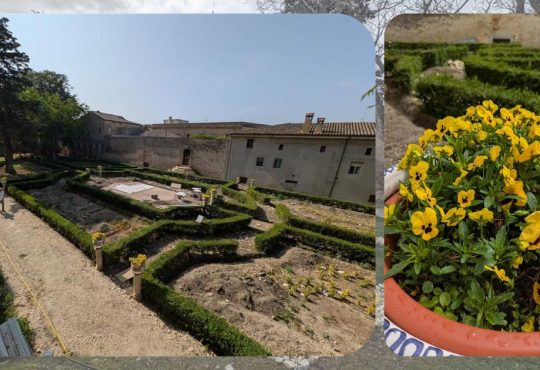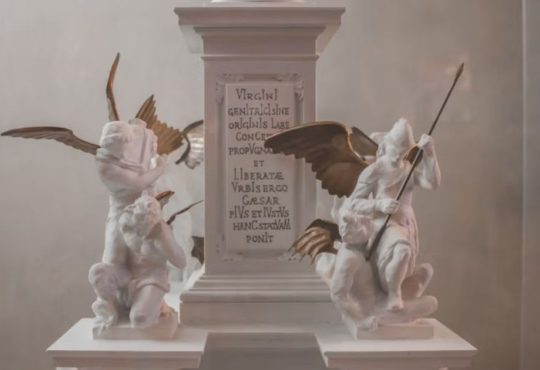In the ever-evolving world of contemporary art, Luis Eduardo Rincón stands out as a rare and dynamic force. A painter, storyteller, and global traveller, Rincón has carved a path that defies convention. Born in Aguachica, Cesar, during one of Colombia’s most turbulent eras, he turned adversity into artistry—shaping a creative identity rooted in personal history, cultural exploration, and emotional truth. Whether through his sweeping historical scenes or intimate figurative studies, Rincón’s art speaks with a voice that is both deeply Colombian and profoundly universal.
Rincón’s journey spans continents and canvases. He’s exhibited in Ecuador, Colombia’s Congress, and even Russia, where he stunned audiences with his reinterpretations of South American battles and historical enigmas like Rasputin. But more than just a painter of the past, Rincón is a teacher, a cultural bridge-builder, and a passionate advocate for accessible art. Here are 15 essential things you need to know about this fascinating artist, whose story is as layered and compelling as his work.
15 Must-Know Facts About Luis Eduardo Rincón’s Creativity
1. He is an artist in every sense imaginable.
Luis Eduardo Rincón’s identity as an artist extends far beyond the canvas; it permeates every aspect of his life. Born in Aguachica, Cesar, and now residing in the coastal city of Santa Marta, he has lived a life defined by movement and curiosity. His restless, nomadic spirit has taken him across continents, immersing him in diverse cultures, landscapes, and human experiences. Each journey has left an imprint on his perspective, shaping his artistic voice and allowing him to approach creation from a truly multidisciplinary standpoint.
Luis Eduardo Rincón employs photography, video, drawing, and performance to convey the full complexity of human experience, making him a creative force who refuses to be confined to a single medium. His artistic vision extends beyond the canvas, influencing the way he lives and interacts with the world. Born in Aguachica, Colombia, Rincón’s work is deeply shaped by his cultural roots and life experiences, which continue to inform his bold, boundary-pushing practice.
2. His early life was shaped by violence and movement.
Luis was born during Colombia’s turbulent period known as La Violencia, a time of political unrest and social upheaval that forced many families, including his own, to relocate in search of safety. This experience of constant displacement was formative, instilling in him a profound awareness of impermanence and adaptation. It also sowed the seeds of a lifelong fascination with journeys—both external and internal. The sense of constantly moving, seeking, and observing would later become a recurring theme in his work, where explorations of human resilience, survival, and emotional landscapes feature prominently.
3. His work centres on life itself.
Instead of limiting himself to aesthetic beauty or technical skill, Rincón’s art serves as a profound meditation on the nature of existence. To him, life encompasses a spectrum of experiences: the subtle currents of emotion, the intensity of passion, the quietness of reflection, and the inevitability of death. This philosophical approach lends a profound depth to his work, making it resonate on an emotional and intellectual level. Viewers are not merely spectators of his art—they are invited into a dialogue with life itself, confronted with the fragility, complexity, and richness of the human experience through his lens.
4. Santa Marta became his creative sanctuary.
After spending his early years in Colombia’s Andean region, Luis sought a landscape that could rejuvenate his creative energy. He found it in Santa Marta, where the lively mix of sea, sky, and coastal architecture unveiled new textures, hues, and atmospheres to fuel his creativity. The coastal light, with its shifting nuances throughout the day, became a vital element in his artistic palette. Living by the sea not only inspires him but also gives him a sense of grounding and peace, making Santa Marta an indispensable sanctuary for his ongoing creative exploration.
5. He’s been painting since he was four years old.
Luis’s artistic journey began almost before he could remember, with early expressions taking the form of wall paintings in his childhood home—a habit echoed today by his daughter. A pivotal moment came in school when a teacher ridiculed his drawings in front of classmates. Rather than deterring him, this experience reinforced his resolve to pursue art with unwavering dedication. From those formative beginnings, painting evolved into a lifelong practice, one driven not by external validation but by an intrinsic need to observe, interpret, and express the world around him.
6. “Luis Matachín” was his first nickname.
The nickname “Luis Matachín” was bestowed upon him by a teacher, intended as a disciplinary label. Ironically, it became a source of pride rather than shame, helping him embrace his unconventional artistic spirit. Rather than stifling his creativity, the nickname symbolised a recognition of his uniqueness and set him apart in his own eyes. Luis recalls the memory with joy, crediting it as one of the early moments that solidified his commitment to art and helped chart the course for his lifelong creative journey.
7. He paints because he has to.
For Rincón, painting is not merely a hobby or a career choice—it is an essential need, a compulsion that stems from the deepest parts of his being. Even during periods when he drifts away from the canvas, he is invariably drawn back, as if painting itself demands his attention. It is the most authentic channel through which he expresses his thoughts, emotions, and experiences, making it an indispensable part of his identity. To Luis, not to paint would be to deny a fundamental part of himself.
8. He trained under Colombian masters.
Luis’s formal artistic foundation was built under the guidance of prominent Colombian mentors. His journey began in Bogotá with Ómar Gordillo, whom he studied under for two years thanks to a family friend’s recommendation. This period provided him with crucial technical skills and a disciplined approach to the craft. Later, after a chance introduction, he became the assistant of Franklin Ramos, a respected artist from Cesar, gaining hands-on experience and exposure to professional artistic practice. These formative experiences shaped the precision, versatility, and depth evident in his work today.
9. His skills were sharpened by curiosity and hard work.
Beyond formal training, Rincón cultivated his craft through relentless curiosity and experimentation. He frequented exhibitions, explored different materials, and continuously sought inspiration from the broader world of fine art. This proactive engagement, combined with his innate talent, allowed him to develop a unique style that balances technical mastery with imaginative exploration. His dedication to self-directed learning and tireless work ethic remain defining characteristics, ensuring his work continually evolves and resonates with new dimensions.
10. He’s been painting professionally since age 16.
While many teenagers are still exploring interests, Luis had already committed to painting as his profession by the age of 16. Over the past 35-plus years, his journey has taken him from the enthusiastic explorations of a young prodigy to the nuanced, reflective practice of a seasoned artist. This vast experience reflects his steadfast dedication, showing how decades of continuous study, practice, and observation have shaped him into the accomplished multidisciplinary artist he is today.
11. His first major project tackled themes of violence and memory.
Luis’s initial significant artistic endeavor was deeply intertwined with his personal history. A writer who had taken note of his life experiences invited him to illustrate a text centered on impunity and collective memory. The collaboration resonated profoundly, as Luis’s childhood encounters with violence provided him with an authentic emotional lens through which to interpret the subject. This project not only allowed him to process and reflect on his own experiences but also marked his formal entry into socially conscious art, demonstrating how personal narrative can illuminate broader societal issues.
12. He has exhibited across Latin America and Russia.
Rincón’s work has reached audiences far beyond Colombia. He has exhibited in Ecuador and even within the halls of Colombia’s Congress at Boyacá Hall, reflecting national recognition of his artistic contributions. However, it was his solo exhibition in St. Petersburg, Russia—The Gallery of Battles—that truly expanded his international profile. The opportunity to present his work abroad, engaging with new cultural contexts and audiences, remains a milestone in his career, and he still recalls the excitement and pride of that moment with a bright, animated expression.
13. His art reframes historical narratives.
Luis has a talent for challenging conventional interpretations of history through his art. For the depiction of the Battle of Gaira, he deliberately rejected the widely accepted “battle at sea” narrative. Instead, he portrayed the Tayrona people executing a land-based ambush on Spanish invaders who had disembarked to gather supplies. This reimagining not only questioned historical assumptions but also invited viewers to engage critically with the past. The approach has captivated audiences internationally, establishing Rincón as an artist unafraid to interrogate and reinterpret the stories history tells.
14. He’s currently working on exhibitions about female pirates and indigenous culture.
Rincón continues to explore lesser-known narratives with upcoming exhibitions that highlight marginalized or forgotten figures. In St. Petersburg, he is preparing a showcase on the only two documented female pirates in history, offering audiences a glimpse into their daring lives. Simultaneously, he is developing an exhibition on La Guajira and the Wayuu people for the World Health Organisation in Moscow, celebrating indigenous culture and resilience. These projects underscore his dedication to amplifying voices and stories that are often overlooked, blending historical research with a compelling visual interpretation.
15. He created a unique space for live model art in Santa Marta.
Committed to fostering artistic growth within his community, Luis established a free workshop at the Magdalena Cultural Centre, focused on the human figure. There, artists are invited to sketch, paint, or write using live nude models—a rare opportunity in the region. The space encourages both technical development and a culture of social openness, creating an environment where creativity and personal expression thrive. Luis hopes to expand the program over time, welcoming more participants and cultivating a new generation of artists who approach the human form with both respect and curiosity.
A Journey of Resilience and Creative Vision
Luis Eduardo Rincón is more than just a Colombian painter—he’s a living testament to resilience, reinvention, and the power of storytelling through art. His work bridges cultures, histories, and emotional truths with an authenticity that resonates far beyond gallery walls. As he continues to push creative boundaries and nurture emerging talent in his community, it’s clear that Rincón’s artistic journey is far from over—and the world should be paying close attention.





